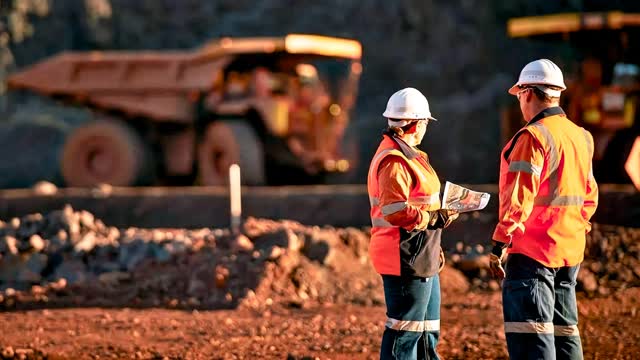

Surface Mine Safety Guide
Learn essential steps to prevent powered haulage accidents at surface mines. This guide covers equipment checks, blind spot awareness, training, communication, and technology use to enhance safety and protect lives. Follow best practices for a safer mining environment.
Learn essential steps to prevent powered haulage accidents at surface mines. This guide covers equipment checks, blind spot awareness, training, communication, and technology use to enhance safety and protect lives. Follow best practices for a safer mining environment.
1
Overview of Large Mobile Equipment:
- Large mobile equipment, such as haul trucks, front-end loaders, and bulldozers, are essential for operations at surface mines.
- These machines are powerful, moving tons of material at a time, but they can also be deadly.
2
Blind Spots:
- Operators in these machines have limited visibility, especially close by, even with mirrors.
- Operators may be unable to see pedestrians, other equipment, or vehicles close to them.
3
Accident Statistics:
- Accidents involving surface haulage equipment are rare but very serious when they occur.
- In recent years, powered haulage accidents accounted for half of all mining fatalities in the U.S.
- MSHA (Mine Safety and Health Administration) has investigated multiple incidents where large equipment drove over smaller
4
Preoperational Checks and Examinations:
- Conduct thorough preoperational checks on equipment, including steering, braking, and mechanical aspects.
- Verify safety technologies like radar and RFID tags.
- Regularly examine work areas for hazards and ensure proper signage and traffic control measures are in place.
5
Training:
- Provide adequate training for equipment operators and workers near powered haulage vehicles.
- Train everyone on safety protocols and how to communicate with equipment operators.
6
Safe Traffic Flow:
- Establish and follow a site-specific traffic plan to minimize contact between mobile equipment and other vehicles/pedestrians.
- Implement one-way traffic flows, separate mining equipment from smaller vehicles, and establish safe zones.
7
Clear Communications:
- Maintain constant and clear communication throughout the shift.
- Ensure radio or eye contact with operators when approaching large mobile equipment.
8
Appropriate Technology:
- Use technology like cameras, backup alarms, and collision warning systems to enhance safety.
- Stay informed about safety technology advancements and consider investing in them.
9
Culture of Safety:
- Maintain a culture of safety and continuous improvement.
- Incorporate best practices into daily operations and look for ways to enhance safety.
- Plan, communicate, be aware of blind spots, and use appropriate technology to prevent accidents.
10
Prevention is Key:
- Powered haulage accidents are preventable.
- Working together, these accidents can be eliminated.